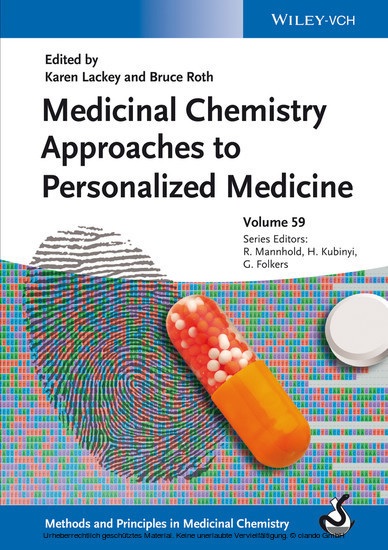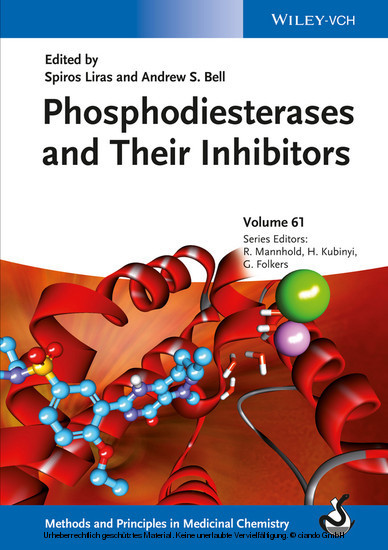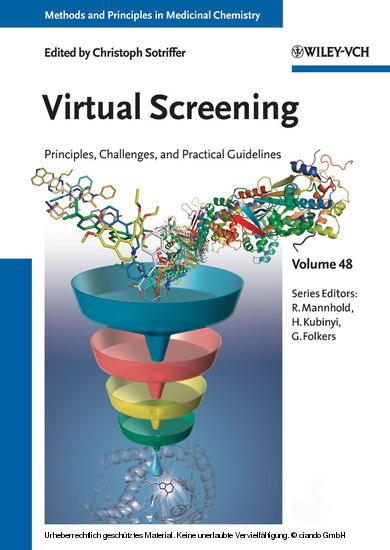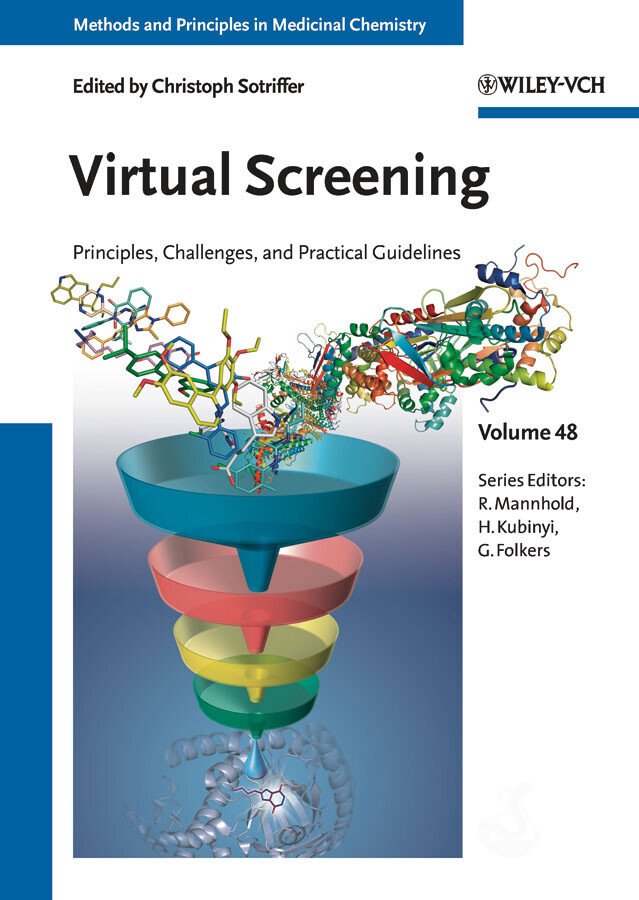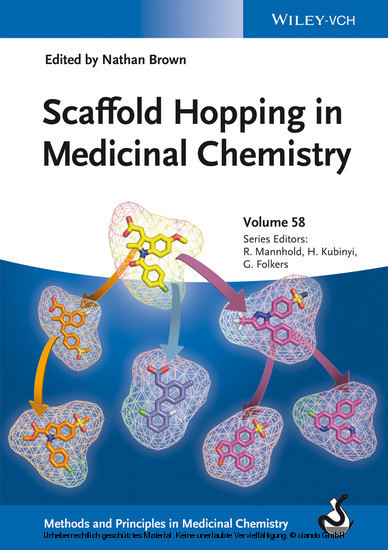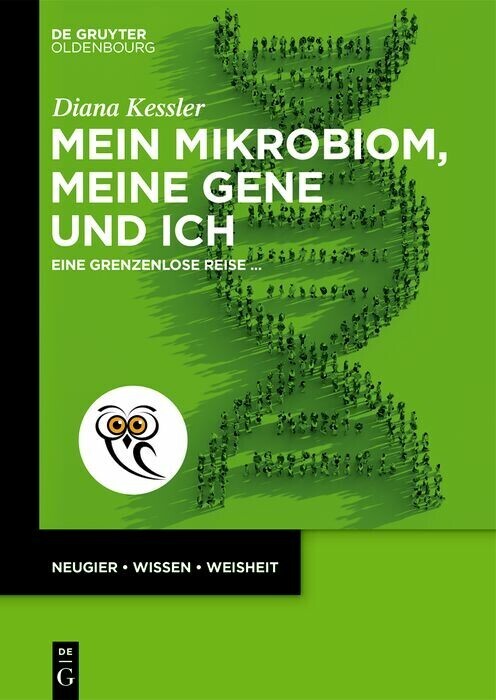Medicinal Chemistry Approaches to Personalized Medicine
Edited by two famous medicinal chemists who have pioneered the development of personalized therapies in their respective fields, this authoritative analysis of what is already possible is the first of its kind, and the only one to focus on drug development issues.
Numerous case studies from the first generation of 'personalized dugs' are presented, highlighting the challenges and opportunities for pharmaceutical development. While the majority of these examples are taken from the field of cancer treatment, other key emerging areas, such as neurosciences and inflammation, are also covered.
With its careful balance of current and future approaches, this handbook is a prime knowledge source for every drug developer, and one that will remain up to date for some time to come.
Karen Lackey joined Hoffmann-La Roche Pharma Research and Early Development in 2010 as Vice President and Head of Medicinal Chemistry at the Nutley, NJ (USA) site, where she is responsible for oncology, inflammation, virology and new technologies. In her previous role, she was the Vice President of Chemistry, Molecular Discovery Research for GlaxoSmithKline. During her 22-year career at GSK, Karen held a variety of positions and contributed to small molecule research, new technology, and systems-based research. Most importantly, she played an active role in the discovery of the dual erbB2/EGFR tyrosine kinase inhibitor, lapatinib, currently marketed as Tykerb.
Bruce Roth is currently Vice President of Discovery Chemistry in Genentech Research and Early Development at South San Francisco (USA). Prior to joining Genentech in 2007, he was Vice President of Discovery Chemistry at the Pfizer Global Research and Development Ann Arbor site where he was also an adjunct Associate Professor in the Medicinal Chemistry Department in the University of Michigan College of Pharmacy. Bruce began his career as a medicinal chemist at Warner-Lambert/ Parke-Davis in 1982 and is best known as the inventor of Lipitor (atorvastatin calcium), for which he has received numerous awards, including the 1999 'Inventor of the Year Award' from the New York Intellectual Property Law Association, the 2003 American Chemical Society Award for Creative Invention and the 2003 Gustavus J. Esselen Award. In 2008 he was named one of the American Chemical Society's Heroes in Chemistry.
Numerous case studies from the first generation of 'personalized dugs' are presented, highlighting the challenges and opportunities for pharmaceutical development. While the majority of these examples are taken from the field of cancer treatment, other key emerging areas, such as neurosciences and inflammation, are also covered.
With its careful balance of current and future approaches, this handbook is a prime knowledge source for every drug developer, and one that will remain up to date for some time to come.
Karen Lackey joined Hoffmann-La Roche Pharma Research and Early Development in 2010 as Vice President and Head of Medicinal Chemistry at the Nutley, NJ (USA) site, where she is responsible for oncology, inflammation, virology and new technologies. In her previous role, she was the Vice President of Chemistry, Molecular Discovery Research for GlaxoSmithKline. During her 22-year career at GSK, Karen held a variety of positions and contributed to small molecule research, new technology, and systems-based research. Most importantly, she played an active role in the discovery of the dual erbB2/EGFR tyrosine kinase inhibitor, lapatinib, currently marketed as Tykerb.
Bruce Roth is currently Vice President of Discovery Chemistry in Genentech Research and Early Development at South San Francisco (USA). Prior to joining Genentech in 2007, he was Vice President of Discovery Chemistry at the Pfizer Global Research and Development Ann Arbor site where he was also an adjunct Associate Professor in the Medicinal Chemistry Department in the University of Michigan College of Pharmacy. Bruce began his career as a medicinal chemist at Warner-Lambert/ Parke-Davis in 1982 and is best known as the inventor of Lipitor (atorvastatin calcium), for which he has received numerous awards, including the 1999 'Inventor of the Year Award' from the New York Intellectual Property Law Association, the 2003 American Chemical Society Award for Creative Invention and the 2003 Gustavus J. Esselen Award. In 2008 he was named one of the American Chemical Society's Heroes in Chemistry.
1;Medicinal Chemistry Approaches to Personalized Medicine;1 1.1;Contents;7 1.2;List of Contributors;13 1.3;Foreword;17 1.4;Preface;21 1.5;A Personal Foreword;23 1.6;Acronyms;25 1.7;1 Medicinal Chemistry Approaches to Creating Targeted Medicines;31 1.7.1;1.1 Introduction;31 1.7.2;1.2 Role of Medicinal Chemistry in Drug Discovery;32 1.7.3;1.3 Evolution of Molecular Design for Subsets of Patients;34 1.7.4;1.4 Combinations for Effective Therapies;36 1.7.5;1.5 Biomarkers in Targeting Patients;39 1.7.6;1.6 Emerging Field of Epigenetics;39 1.7.7;1.7 Systems Chemical Biology;40 1.7.8;1.8 Theranostics and Designing Drug Delivery Systems;42 1.7.9;1.9 Rapid Progress in Further Personalizing Medicine Expected;45 1.7.10;References;48 1.8;2 Discovery of Predictive Biomarkers for Anticancer Drugs;51 1.8.1;2.1 Introduction;51 1.8.2;2.2 "Oncogene Addiction" as a Paradigm for Clinical Implementation of Predictive Biomarkers;54 1.8.3;2.3 Cancer Cell Lines as a Model System for Discovery of Predictive Biomarkers;58 1.8.3.1;2.3.1 Historical Application of Cell Lines in Cancer Research;58 1.8.3.2;2.3.2 Biomarker Discovery Using Cell Line Models;59 1.8.3.3;2.3.3 Cell Lines as Models of Human Cancer;61 1.8.3.4;2.3.4 Challenges and Limitations of Cell Line Models;62 1.8.4;2.4 Modeling Drug Resistance to Discover Predictive Biomarkers;63 1.8.5;2.5 Discovery of Predictive Biomarkers in the Context of Treatment Combinations;68 1.8.6;2.6 Discovery of Predictive Biomarkers for Antiangiogenic Agents;72 1.8.6.1;2.6.1 Challenges;73 1.8.6.2;2.6.2 Pathway Activity as a Predictor of Drug Efficacy;74 1.8.6.3;2.6.3 Predicting Inherent Resistance;75 1.8.6.4;2.6.4 On-Treatment Effects as a Surrogate of Drug Efficacy;75 1.8.6.5;2.6.5 Summary;76 1.8.7;2.7 Gene Expression Signatures as Predictive Biomarkers;77 1.8.7.1;2.7.1 Signature Discovery: Unsupervised Clustering;77 1.8.7.2;2.7.2 Diagnostic Development: Supervised Classification;78 1.8.7.3;2.7.3 Summary;80 1.8.8;2.8 Current Challenges in Discovering Predictive Biomarkers;81 1.8.8.1;2.8.1 Access to Tumor Cells Is Limited during Treatment;81 1.8.8.2;2.8.2 Drivers and Passengers;83 1.8.8.3;2.8.3 Epigenetic Regulation Adds Another Layer of Complexity;84 1.8.8.4;2.8.4 Many Oncoproteins and Tumor Suppressors Undergo Regulatory Posttranslational Modifications;85 1.8.9;2.9 Future Perspective;86 1.8.10;References;87 1.9;3 Crizotinib;101 1.9.1;3.1 Introduction;101 1.9.2;3.2 Discovery of Crizotinib (PF-02341066) [40];104 1.9.3;3.3 Kinase Selectivity of Crizotinib;107 1.9.4;3.4 Pharmacology of Crizotinib [45,46];108 1.9.5;3.5 Human Clinical Efficacies of Crizotinib;110 1.9.6;3.6 Summary;113 1.9.7;References;115 1.10;4 Discovery and Development of Vemurafenib: First-in-Class Inhibitor of Mutant BRAF for the Treatment of Cancer;121 1.10.1;4.1 Background;121 1.10.2;4.2 Discovery and Development of Vemurafenib (PLX4032);122 1.10.3;4.3 Pharmacology;125 1.10.4;4.4 Clinical Efficacy and Safety;126 1.10.5;4.5 Companion Diagnostic (cobas 4800) Development;126 1.10.6;4.6 Synthesis;126 1.10.6.1;4.6.1 Discovery Route(s);126 1.10.6.2;4.6.2 Process Route;127 1.10.7;4.7 Summary;128 1.10.8;References;128 1.11;5 Targeting Basal-Cell Carcinoma: Discovery and Development of Vismodegib (GDC-0449), a First-in-Class Inhibitor of the Hedgehog Pathway;131 1.11.1;5.1 Introduction;131 1.11.2;5.2 Hedgehog and Basal-Cell Carcinoma;132 1.11.3;5.3 Cyclopamine as an SMO Antagonist;132 1.11.4;5.4 Small-Molecule Inhibitors of SMO;133 1.11.5;5.5 Preclinical Characterization of Vismodegib;137 1.11.5.1;5.5.1 Plasma Protein Binding and Blood Plasma Partitioning;137 1.11.5.2;5.5.2 In Vitro and Exploratory In Vivo Metabolism of Vismodegib;138 1.11.5.3;5.5.3 Drug-Drug Interaction Potential;139 1.11.5.4;5.5.4 Preclinical Pharmacokinetics;139 1.11.5.5;5.5.5 Predicted Human Pharmacokinetics;140 1.11.5.6;5.5.6 Summary;142 1.11.6;5.6 Vismodegib Clinical Experience in Phase I;142 1.11.7;References;144 1.12;6 G-Quadruplexes as Therapeutic Targets in Cancer;147 1.12.1;6.1
Lackey, Karen
Roth, Bruce
Mannhold, Raimund
Kubinyi, Hugo
Folkers, Gerd
| ISBN | 9783527677276 |
|---|---|
| Artikelnummer | 9783527677276 |
| Medientyp | E-Book - ePUB |
| Copyrightjahr | 2013 |
| Verlag | Wiley-VCH |
| Umfang | 350 Seiten |
| Sprache | Englisch |
| Kopierschutz | Adobe DRM |


